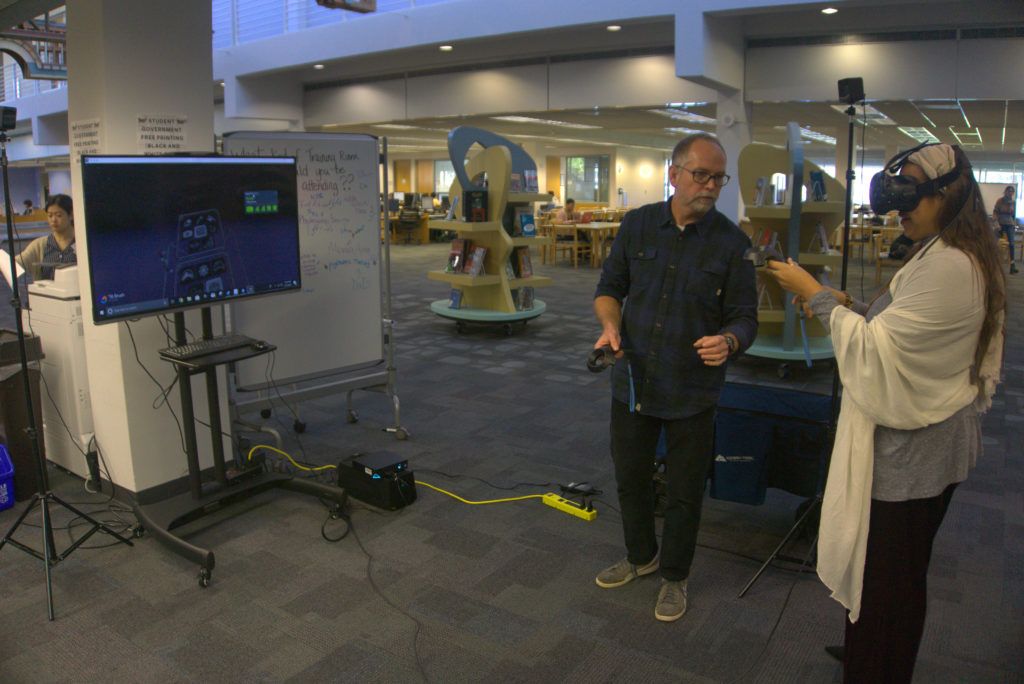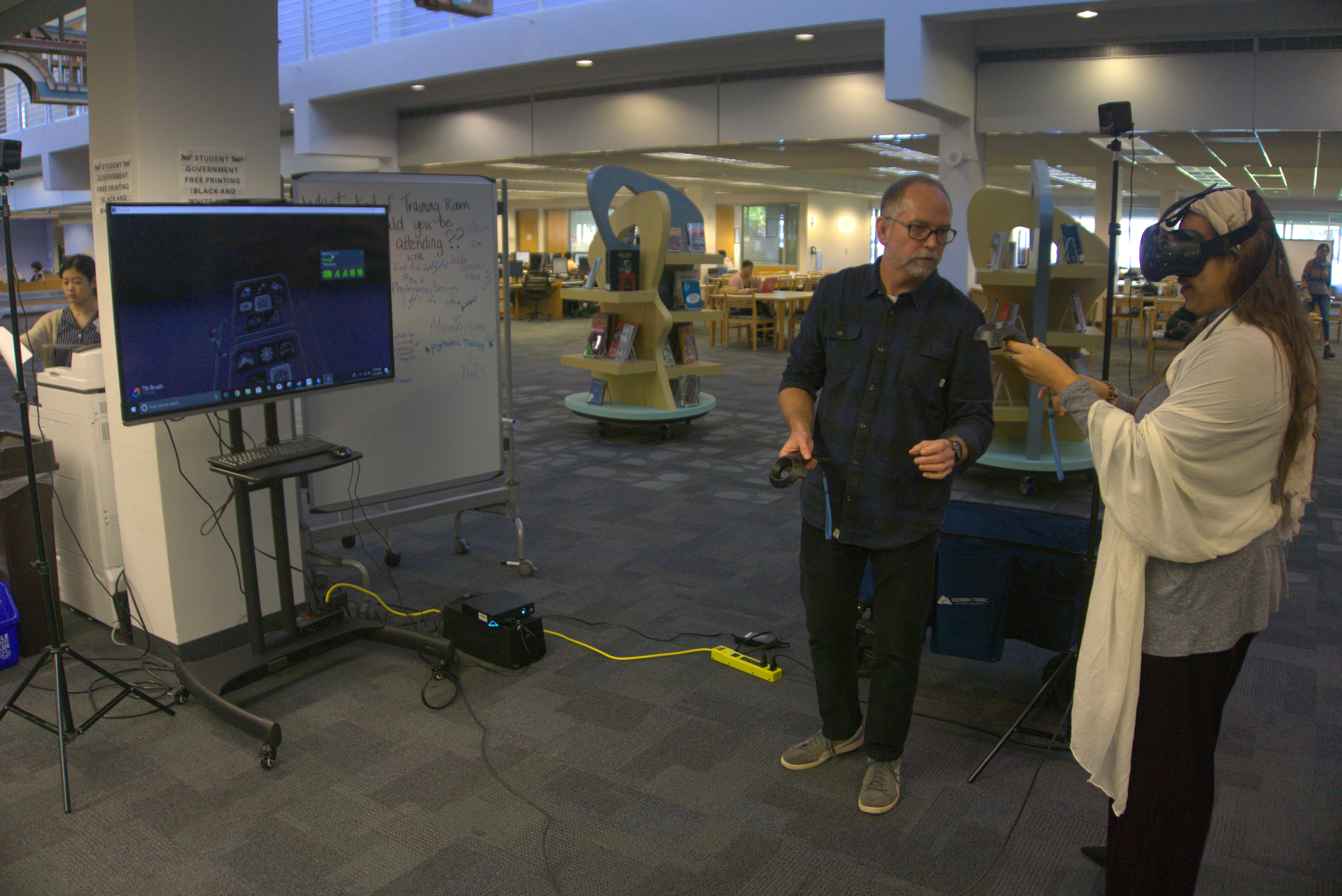
By Luke Cross
Fans of sci-fi will tell you a good book can take you to a different world. But on Thursday, the Nelson Poynter Memorial Library showed that there are more methods than books to transform reality.
Virtual reality, a form of interactive technology that immerses you in a digital world, was the star of a small open house in the library that offered trials of an HTC Vive headset alongside smaller gadgets to augment the VR experience.
The Vive is a goggle-like headset equipped with internal screens to occupy the wearer’s vision and two hand-held controllers for manipulating the digital environment.
“You kind of lose where you are when you’re inside. I definitely forgot I was in Poynter,” said Lasonya Moore, assistant professor of special education. “I got lost in virtual reality before my subconscious kicked in and realized ‘Oh, you’re a professor in the library, just spinning around in a chair.’”
Moore’s educational focus is on students with exceptionalities and bridging the socio-economic gap in marginalized classrooms. She attended the open house to look for educational uses for the technology.
“I think when I voiced that realization, it prompted others to chime in that they thought the situation was funny too,” Moore said. “It allows you to remove that fear of the taboo and allows learning. No one person is teaching and no one person is learning, we’re all teaching each other.”
While most students and faculty used the Vive to create 3D art or manipulate digital objects, educators often see VR as a means of exploring academic subjects through new avenues.
“I can see using the technology to not just talk about topics like Brown v. Board of Education, I would be able to take them back in time to show how it felt like and sounded like,” Moore said. “When you can bring the lesson to them in a variety of modalities, students will retain much better while still having fun.”
Despite its novelty, the technology’s price tag is feasible for use in underfunded classrooms. While the primary attraction of the event, the HTC Vive, retails for over $500, VR headsets utilizing smartphones or tablets sell for a fraction of that price.
Combined with its intuitive nature, the accessibility of VR makes it a good candidate for engaging students across all demographics, according to Moore.
“The youngest person I’ve seen here has been 18, 19, all the way up to people in their 60s. I am all about communication, collaboration and collegiality, so anything that can bring people together like this is powerful to me.”
While the Vive was the event’s focus, there were a handful of other reality-altering technologies .
In addition to the cheaper headsets, a handful of Merge Cubes — physical proxies between our tactile world and virtual reality — were used as an augmented reality addition to the intangible VR environment.
“I did a 3D scan of my 8-year-old son, put him on the cube, and I was just tossing him around in VR,” said Chad Mairn, manager of St. Petersburg College’s Innovation Lab.
The Innovation Lab is a tech-based learning environment, which provided the equipment used in the open house.
Mairn and the Innovation Lab often host workshops where children and adult students learn to create environments in VR and augmented reality to better facilitate learning. Partnerships with local museums and galleries provide otherwise impossible educational opportunities to students.
“The Seminole Historical Society has some dinosaur bones, and we plan on bringing the equipment to scan them so kids can handle the bones through the Merge Cubes,” Mairn said. “The technology opens a lot of doors.”
More events for exploring interactive technology are in the works, though no set dates have been planned. Advances in the field and grants for SPC’s Innovation Lab and College of Education’s new STEM INQ lab could make VR open houses a regular occurrence, according to Mairn.



